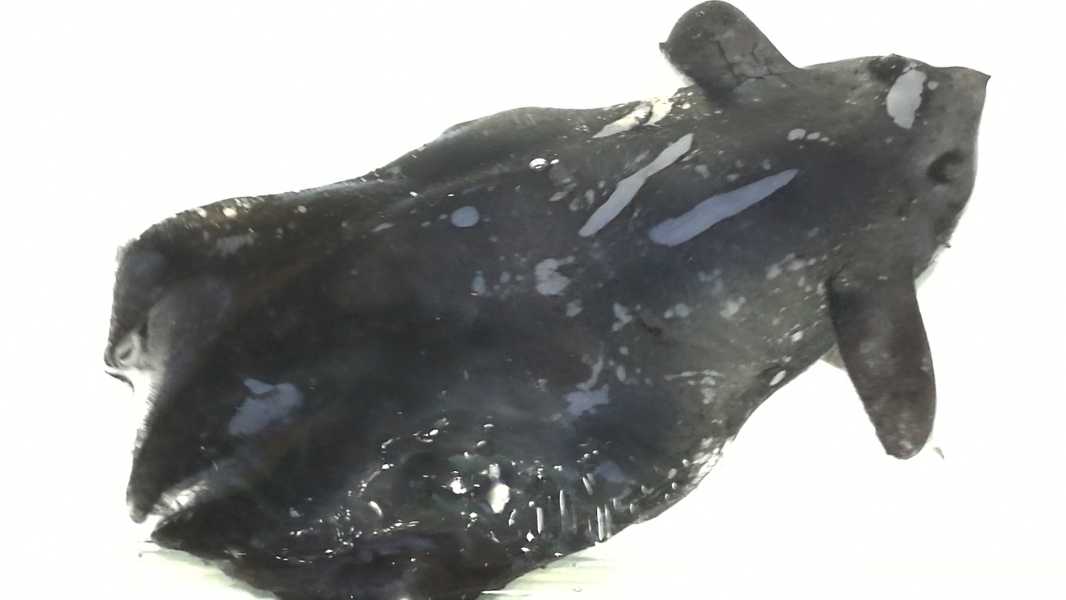
The newly discovered vampire squid V. pseudoinfernalis. (Photo: Dajun Qiu)
Scientists in China may have discovered a new species of vampire squid – only the second known species in the world.
The vampire squid (Vampyroteuthis infernalis) grows to about 1 foot (0.3 meters) in length. Despite its menacing appearance and name, they are deep-sea scavengers and are unlikely to pose a threat to anything other than small invertebrates, and in fact usually prefer feces and dead animals.
This species is found in temperate and tropical oceanic ecosystems in various regions of the world.
The only officially recognized species was described in 1903 after a deep-sea expedition led by German marine biologist Carl Tschun. Several other species were described later, but they turned out to be representatives of the same species.
These putative new species were juvenile forms of V. infernalis that had completely different physical characteristics: as the squid grew, a second pair of fins appeared closer to the head, and its original fins disappeared.
“The 10 synonymous species that were described previously showed some morphological differences at different life stages,” lead study author Dajun Qiu, a marine biologist at the South China Sea Institute of Oceanology, told Live Science.
Now, in a new study published May 2 in the preprint journal BioRxiv, scientists have described a second species of vampire squid, which they named V. pseudoinfernalis, found in the South China Sea, off Hainan Island, China, in 2016. It was found 2,600 to 3,300 feet (800 to 1,000 meters) below the sea’s surface, in the so-called twilight zone, where limited light from the surface penetrates.
This newly identified species exhibits some unique features that distinguish it from V. infernalis. For example, the placement of the two photophores, the light-producing organs, located between the fins and the tail are different. In V. infernalis, they are located a third of the way between the fins and the end of the body, while in V. pseudoinfernalis, they are located about halfway between these points. V. pseudoinfernalis also has a pointed tail, while V. infernalis does not. The new species also has a beak with a longer wing on the lower jaw.
In photographs of the preserved specimen it appears as a black, gelatinous blob, but in deep-sea conditions it probably takes on the flowing, cape-like form of its relative.
Genetic analysis also suggests that V. pseudoinfernalis is a distinct species, Qiu said.
“We will analyze more samples to ensure that the observed morphological differences are consistent in the future,” Qiu added. Its diet appears to be similar to that of its more famous relative, but research is ongoing, he said.
While the order Vampyromorphida only includes V. infernalis and the putative V. pseudoinfernalis, there are many extinct relatives in the fossil record. According to a 2024 paper, a newly discovered species found in Luxembourg in 2022 was preserved with a fish clutched in its tentacles.
TOPICS China

Richard PallardyNavigate Social LinksLive Science Contributor
Richard Pallardy is a freelance science writer based in Chicago. He has contributed to such publications as
Sourse: www.livescience.com





